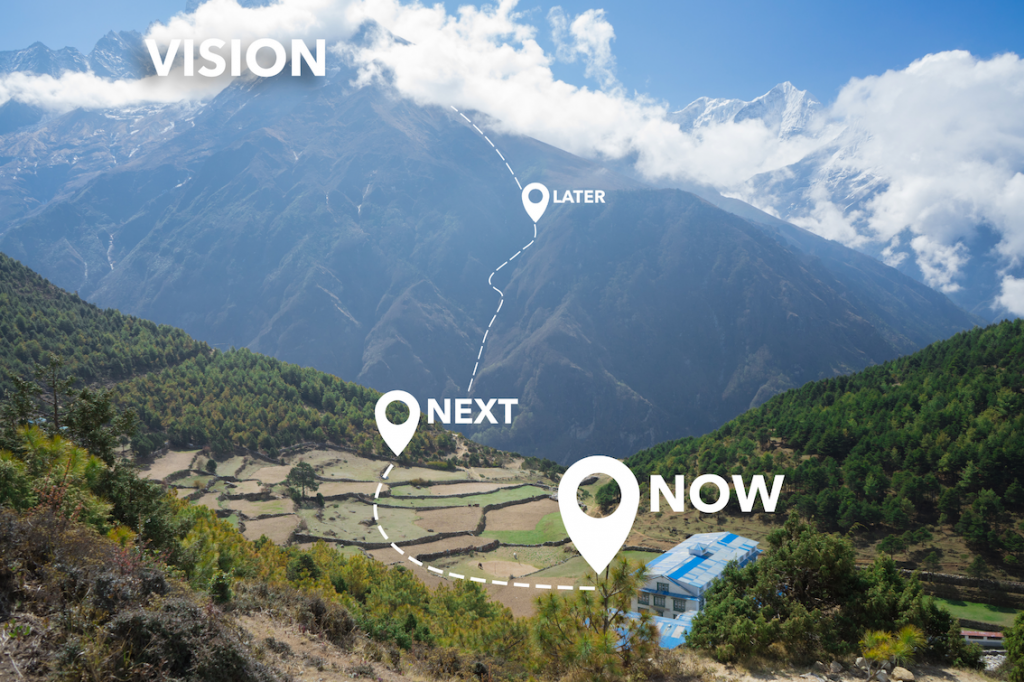
Before you start any advertising campaign, you need to know your customers! That’s where a marketing roadmap becomes an essential part of your business plan.
Have you ever gone on a road trip to an unfamiliar place without a map at hand? Did you get lost and end up needing to stop for directions? Making the trip longer than it needed to be?
Just like going on a road trip, marketing can come with its fair share of unexpected turns and twists. Mapping out the direction of where you want your business to go is important if you want your marketing to be effective and timely. Essentially, a marketing roadmap is the blueprints of your marketing strategy for a period of time to achieve a goal.
Are you ready to begin your marketing roadmap, but don’t know where to start? Contact picnic social for a complimentary consultation on how we can take your business from concept to reality.
What is a marketing roadmap?

Marketing roadmaps keep your business’s marketing plans centered, focused, and on the right trajectory.
“The aim of marketing is to know and understand the consumer so well that the product or service fits them and sells itself.” – Peter F Drucker
That all starts with a roadmap.
Types of marketing roadmaps
Marketing roadmaps come in a variety of formats that fulfill different functions. According to Roadmunk.com, the most popular roadmaps include:
- Goal based maps – follows the funnel approach to marketing where you want to build awareness that ultimately leads to conversions.
- Buyer persona – are semi-fictional representations of your ideal customers.
- Theme based maps – categorizes the plan based on themes you want your campaign to follow.
- Team role roadmaps – suited if you’re working in a team, tasks people with doing specific items.
- Deadline maps – creates deadlines that must be followed and upheld by a specific date. Usually done after creating more big picture focused roadmaps.
Roadmaps we use at picnic
picnic creates roadmaps to accurately analyze a business’s industry, competitors, customers and market positions to create an effective marketing plan for you to follow. We do this so we can best understand the trajectory of where we want our marketing goals to go and what we want to achieve. We create roadmaps for each season (2-3 months) and center many of them around holidays (for instance, Christmas).
1. Creating buyer persona roadmaps
In our buyer persona blog we go over how to create a buyer persona for your small business. It’s important to start with your buyer persona because you want to create a goal-based roadmap for each persona.
Why can’t I just create one roadmap for all my customers?
The customers you have may come in different demographics and niches. For instance, what works for a woman in her thirties may not work for a man in his fifties. Plus, with the holidays coming, your marketing will want to consider existing customers, potential customers, as well as holiday shoppers who will be thinking of friends and family members. Knowing thy customer ahead of time will make your roadmaps more successful.
What goes into a buyer persona?
There are many templates and formats you can use for your buyer persona. Our favourite to use is the format from Xtensio. Each buyer persona is unique to the business they belong to, but pretty much all buyer personas contain:
- Bio – summary of who they are.
- Task – Why they are seeking out a product like yours.
- Pain points and benefits – A summary of what is troubling them in their personal or professional life.
- Challenges – What are the challenges involved in working with this type of person?
- Opportunities – What opportunities present themselves in working with this persona?
Create around 2-3 buyer personas for your business. Afterwards, you can create a roadmap for each persona.
How to create a goal based roadmap
The roadmaps we use at picnic are goal-based roadmaps. Goal based maps are best for gaining customers through lead generation. And they work! Our clients at Good Space Plans Online saw an increase of online conversions by a whopping 120% just by creating their marketing roadmap.
We’re going to take you through the step-by-step of creating a roadmap.
1. Awareness – First Interaction
This step is when you’re first introducing yourself to your audience. This is where people are looking for answers to problems online, searching for services, or are just casually browsing. You want to create content that is easy to consume, helpful, and solves problems for your audience that they may not even know about.
Content that goes into the awareness phase includes blog posts, social media, video and webinars, and tools and kits your digital marketing provides. When people find your content helpful, emotionally stirring, or interesting, they can move to the consideration part of the funnel.
2. Engagement – Second or Third Interaction
It’s said that it takes at least two interactions online to build with a customer before they start to consider you. The consideration phase takes form in people liking and following your social media, subscribing to your newsletter, or researching more into your company.
Content that goes into the consideration phase includes newsletters, webinars, videos, workbooks, social media, blogs, and complementary services. The content for the consideration phase needs to be planned out before the awareness phase ends so you can ensure customers have a smooth journey to the next phase, inspiration.
3. Inspiration – Fourth or Fifth Interaction
Customers that reach the inspiration phase have now created a stronger emotional attachment to your brand. Now is the time to consider their pain points and what they are trying to solve with your service. It’s important to plan out the content you will give them that will help solve their issues.
At this point, they may be ready to buy but you need to make sure they want to buy from you.
Content that gives them that extra nudge includes retargeted ads, social media, email marketing, special offers, and other complementary services. After they buy, it’s time to build their loyalty.
4. Evaluation – Post Purchase Interaction
Even though you made the conversion, post purchase behavior is critical as it can decide the difference between a one-time client, and a life-long one. This is the time to increase trust between the consumer and the brand. Keep content for this phase planned ahead so you can ensure high-quality work to your clients that makes them want more.
The key here is to go up-and-beyond their initial expectations. Offering extra services, quality of content, and even being extra personable with them is enough to increase brand satisfaction. The content you should be using in this phase includes email marketing, retargeting/remarketing, self-service channels such as knowledge bases, live chat and chatbots, and loyalty programs.
Following Up
Now you have the right tools to ensure you have quality content for each step of the roadmap. By creating roadmaps for each buyer persona you have, you can hone in on what makes your services different and exceptional versus your competitors. This will help create leads and ding, ding, ding, you guessed it, conversions.
Need help with your own roadmap? Just in time for the holidays, picnic can help build your very own roadmap starting at $1200. This includes full research into your buyer personas, competitive keyword analysis, and a goal-based roadmap of your brand. Contact us here to get started on your road trip to conversion success.




